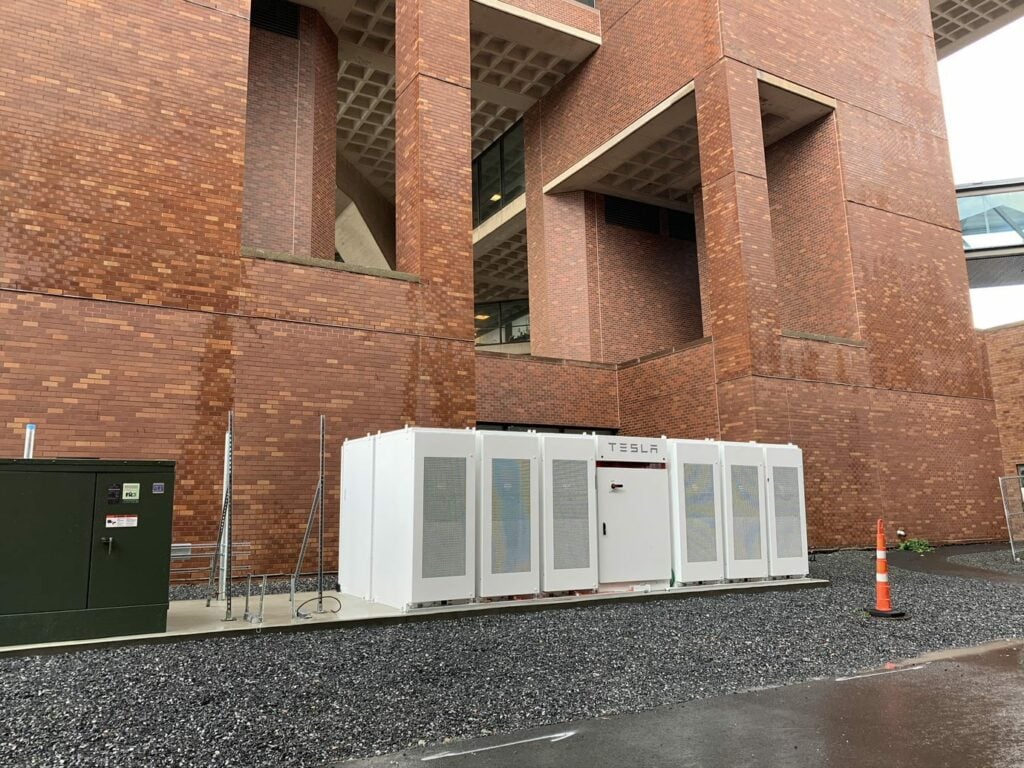
Enel X will participate in a pilot project in Ontario, Canada, aggregating together a combination of behind-the-meter battery storage and demand response to create firm, reliable resources for the grid.
The digital and smart energy services arm of Italy-headquartered multinational energy company Enel is collaborating with the province’s Independent Electricity System Operator (IESO) and the regulator, Ontario Energy Board for the pilot.
Enjoy 12 months of exclusive analysis
- Regular insight and analysis of the industry’s biggest developments
- In-depth interviews with the industry’s leading figures
- Annual digital subscription to the PV Tech Power journal
- Discounts on Solar Media’s portfolio of events, in-person and virtual
Enel X already manages around 150MW of demand response capacity in the Ontario markets and over 60MW of battery storage either contracted or already operational.
That latter figure includes a 20MW/40MWh behind-the-meter (BTM) battery energy storage system (BESS) it is building and installing at a petrochemical refinery complex for Imperial Oil. As reported by Energy-Storage.news, construction began on that project in February.
As with many other BTM but often quite large BESS systems installed in Ontario, that project helps Imperial Oil significantly reduce its energy costs by reducing the site’s exposure to peak periods. Industrial entities get charged a premium for their use of power at peak times under Ontario’s Global Adjustment Charge (GAC) scheme.
The project for Imperial Oil will be the largest BTM system in North America according to Enel. It will be among the assets aggregated into the pilot announced today.
The reasoning behind the pilot is that while Ontario’s installed base of BTM batteries and demand response enrolments are growing, distributed energy resources (DERs) such as they are, are not able to contribute directly to grid stability and energy security via IESO administered markets (IAMs).
They are prohibited from participating due to existing rules. As with the US — where the Federal Energy Regulatory Commission (FERC) has determined through FERC Order 841 and FERC Order 2222 that batteries and other DERs should be able to access wholesale markets — this could be about to change.
Enel X will collaborate with businesses to aggregate up to 76.6MW of energy load, from 14 different sites that host BTM battery storage and demand side response (DSR).
Over the two-year pilot, the ability of aggregated DERs to provide significant energy load reduction, serve as firm and reliable energy resources to the grid and enhance the province’s electricity system will be demonstrated.
“Large energy users in Ontario continue to make significant commitments to reducing emissions, recognising emissions reductions not only as an opportunity to make operations more sustainable but an opportunity to manage their energy costs,” Enel X North America head Surya Panditi said.
“It’s critical that we continue to unlock these businesses’ energy resources to reduce demand on the grid, lower energy costs, improve sustainability, and deliver economic value.”
‘Facilitating meaningful innovation’
The project is being supported by the OEB’s Innovation Sandbox, which allows innovators and entrepreneurs to test out everything from new ideas and products to services and business models for the gas and electricity sectors.
It will also get CA$3.3 million (US$2.65 million) financial support from IESO’s Grid Innovation Fund, which has since 2005 assisted innovations that could help lower the costs of electricity in Ontario through better energy management or aiding reliable operation of the grid.
The fund is currently running 15 active projects according to the IESO’s website, including a carbon-free microgrid project by Ameresco which supplies heat, cooling and electricity to a secondary school and Canada’s first “fully-merchant grid-scale energy storage facility,” by NRStor, which uses BESS technology as a non-wires alternative to help grid reliability.
“We need to facilitate meaningful innovation by utilities and others, and protect consumers as the energy sector transforms. Projects like these – and the kind of support that the Innovation Sandbox offers – provide insight into emerging challenges in the sector, as well as the solutions that can tackle those challenges,” OEB CEO Susanna Zagar said.
Ontario’s electricity demand grows at a rate of about 1.7% each year, largely driven by industrial facilities, IESO president and CEO Lesley Gallinger said. The pilot will help show how those businesses can “better participate in the electricity sector, securing a new revenue stream while contributing to a reliable, sustainable and affordable electricity system in Ontario,” Gallinger said.






